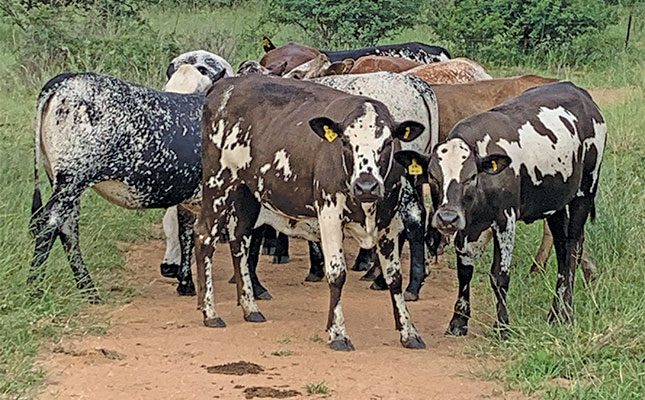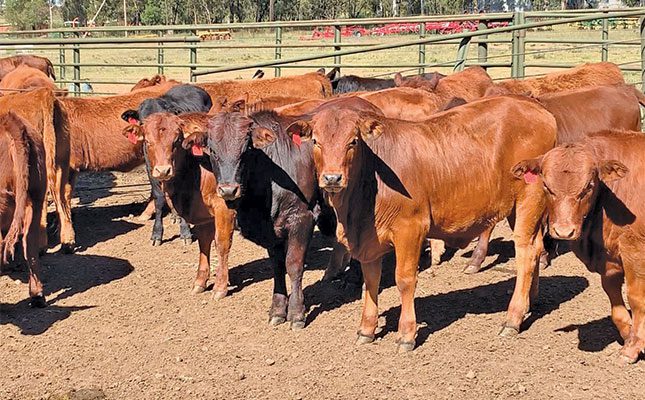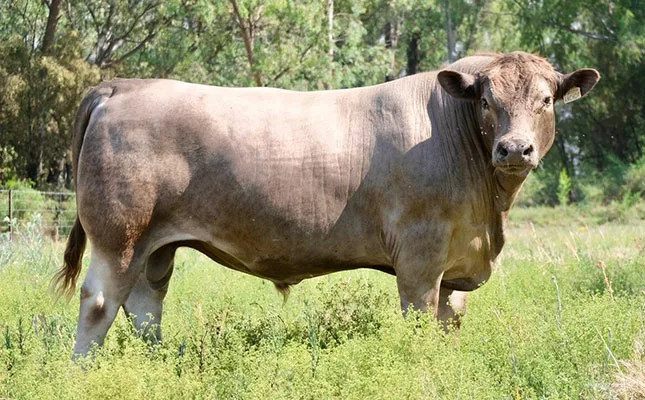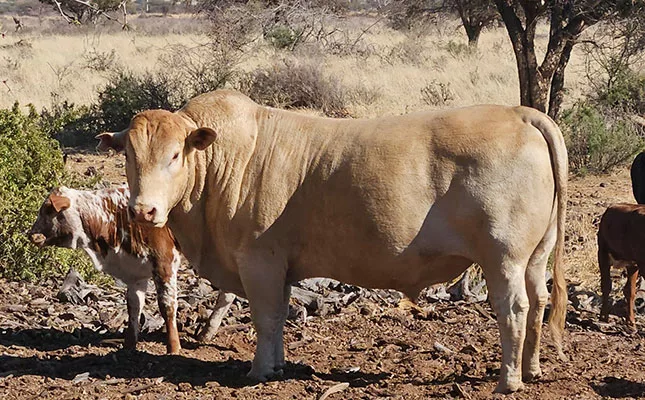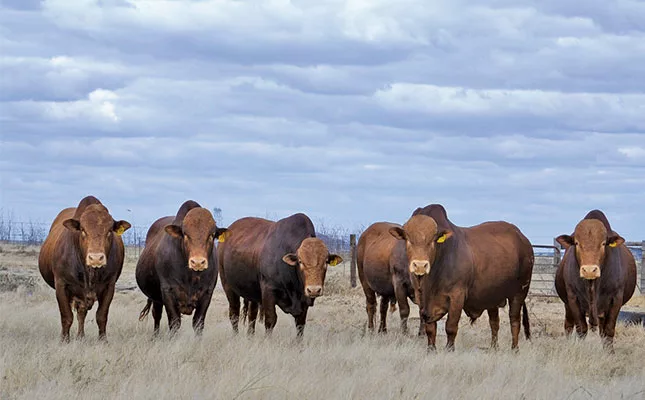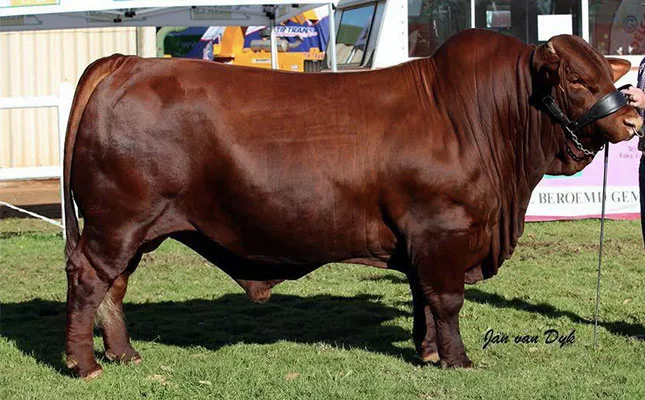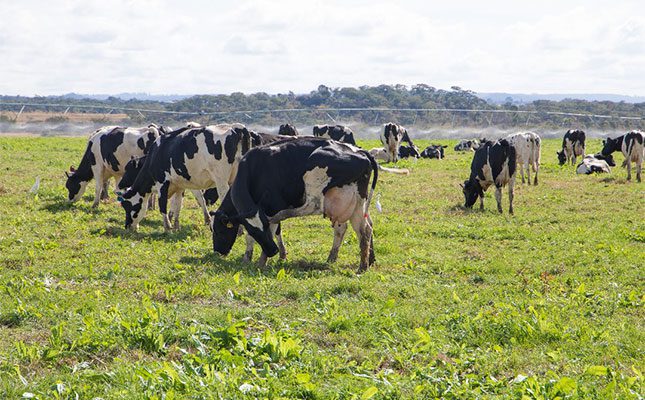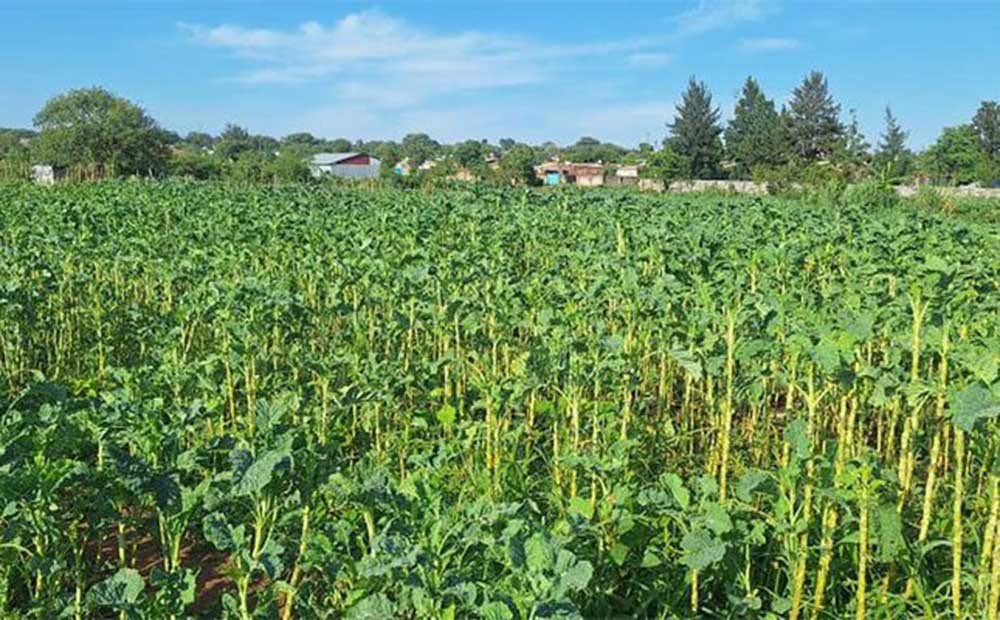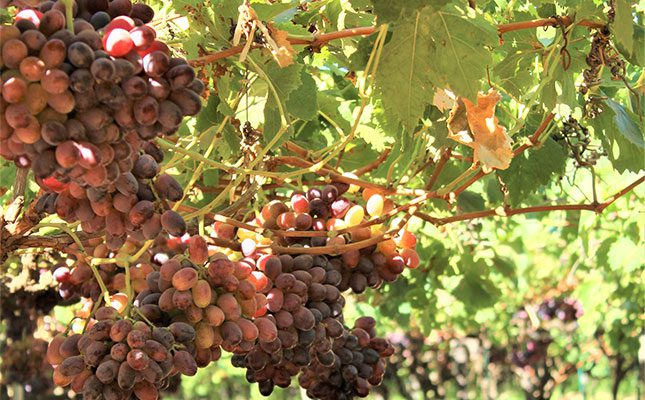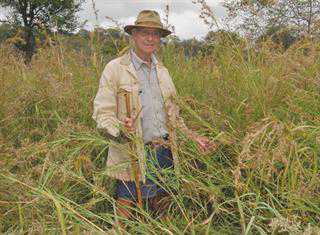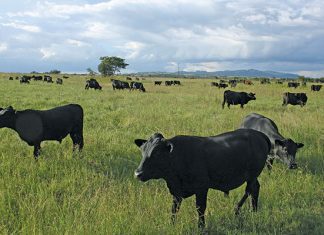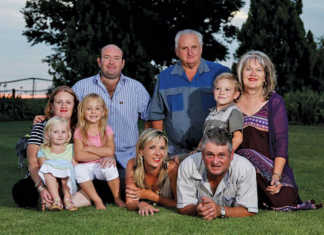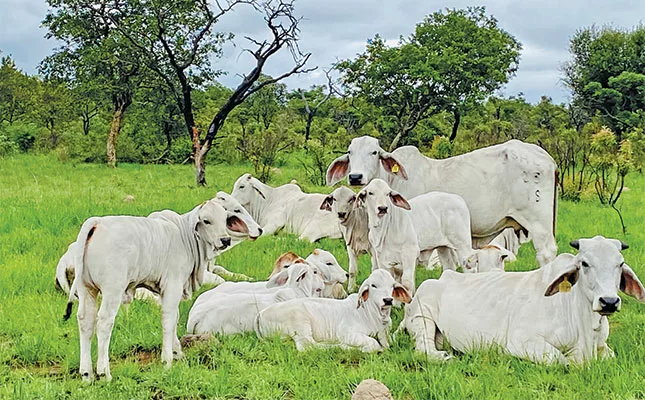
Photo: Ampie and Riki Rossouw
The 180-strong CRE Brahmans stud, located in Modimolle, Limpopo, is run on Ampie and Riki Rossouw’s farm Boekenhoutfontein (1 300ha), on sourveld where diseases such as heartwater and redwater are rife.
“Over the years, we have never wavered from our objective to breed robust, fertile and structurally correct Brahman cattle. We are dedicated to the breeding of Brahman cattle that are known for feed efficiency, effectively converting food into meat. This trait leads to faster weight gain and lower feeding costs.
READ 5 Cattle diseases that can kill your business
“Our vision of breeding cattle that thrive under tough conditions while delivering genetic excellence remains steadfast. To that effect, Phase C testing plays an integral role in the process of selection of high-performing, economical cattle. We firmly adhere to the adage that ‘if you can measure it, you can manage it’,” says Ampie Rossouw.
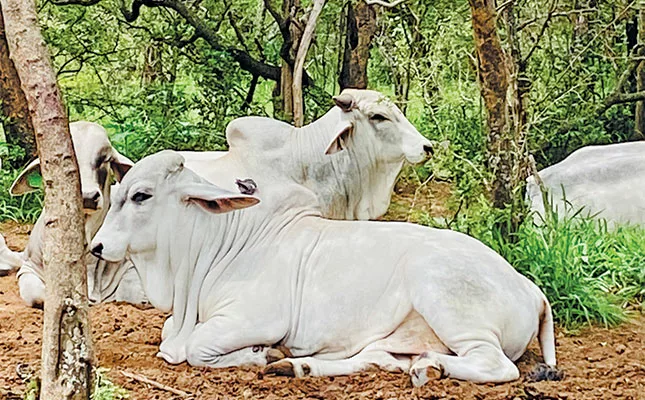
The Brahman Cattle Breeders’ Society of South Africa (BCBSSA) explains on its website that the fastest way to improve feed efficiency in a herd is to select breeding bulls that are naturally feed-efficient, since 80% to 90% of the genetic improvement in a herd comes from the sires.
An efficient bull will pass on superior genetics for feed efficiency to his progeny, which will be realised as feed savings for calves in the feedlot and for replacement heifers entering the cow herd.
The Brahman is, according to Rossouw, adaptable and resilient, with superior meat quality. The breed’s adaptability is underscored by the fact that Brahmans are equipped to handle diverse climatic and environmental conditions.
Performance metrics
Rossouw stresses that while the CRE team understands that performance metrics matter, a good Brahman must have outstanding walking ability. CRE therefore focuses on cattle with strong feet, good legs and a calm disposition, essential for both stud and commercial farming concerns.
“CRE Brahmans has become a brand associated with trust, consistency and forward thinking. This is underscored by the considerable number of buyers returning year after year,” says Rossouw.
READ Performance testing for the commercial farmer
Phase C testing for post-weaning bulls assesses the genetic potential and growth of the animals. This critical step ensures that only the best bulls, those that conform to the society’s breeding standards, are selected for further development.
The CRE stud is dedicated to put functional bulls on the market, and that is why Phase C testing is of such importance to the Rossouws.
According to the Agricultural Research Council, feed costs amount to between 55% and 70% of a livestock concern’s total production costs, so a 10% improvement in animal feed efficiency can result in a yearly saving of several hundred million rands for the beef cattle industry as a whole (Farmer’s Weekly, 19 March 2021).
Gold merit
The bull CRE 2252 is an excellent example of the CRE stud’s commitment to the production of top-performing bulls. It underwent Phase C8 testing at the renowned Bufland Test Station, Limpopo, in 2023, where he excelled, achieving Gold Merit status with an ADG index of 109 and FCR of 108.
During this time, CRE 2252’s exceptional qualities also earned him the prestigious A-Bull status, a testament to his genetic and phenotype superiority and potential to make a significant impact on the breed. CRE 2252 also represented the BCBSSA this year at the Bloem Show’s Vleissentraal Elite Bull Growth Awards.
“The achievement of CRE 2252 is a direct result of our commitment to excellence in Brahman breeding.
“Through our meticulous selection and testing processes, we strive to produce bulls that not only meet but exceed the standards of the breeders’ society.
“As we continue to push the boundaries of genetic excellence, CRE 2252 stands as a shining example of what can be achieved through dedication, expertise and a passion for Brahman breeding,” says Rossouw.
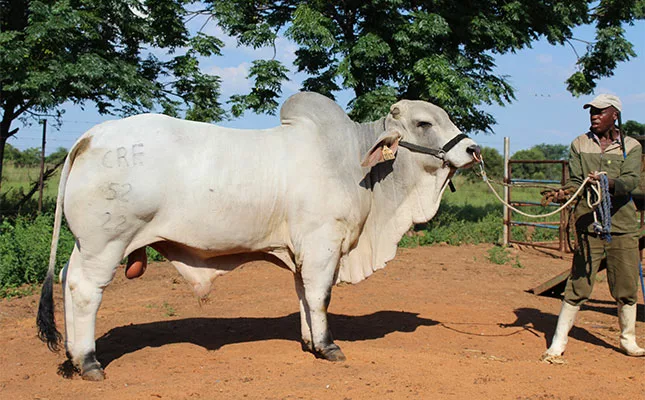
Thorough performance testing on all the bulls made it possible for CRE to produce structurally sound bulls.
Results of tests done in 2020 on two CRE animals showed that both the A2 carcasses achieved a slaughtering percentage of 59,17% and 54,90 %, respectively. The same tests were repeated last year and both A2 carcasses achieved a slaughtering percentage of 60,14% and 58,7%, respectively.
This improvement can directly be attributed to, according to Rossouw, the Phase C testing and strict selection.
The CRE medium-framed females are firmly selected for structural correctness, fertility, enough milk and good udders, as well as ease of calving. During the AU Albidus Brahman Auction held in March this year, CRE achieved the highest price of R30 000 for a heifer that walked with a bull.
Of the four cows with calves at the auction, CRE realised the top price of R50 000 for a cow and a calf.
“The CRE heifers and cows are well wedged, while the bulls are early maturing coupled with structural soundness as well as performance figures to back them up. Our objective is to put good, middle-of-the-road and well-balanced bulls on the market in terms of performance figures that are not too high or too low. The breed’s heat tolerance adds to the Brahman being the ideal choice for Southern Africa’s extensive and semi-arid farming conditions,” Rossouw explains.
Camp system
The farm’s sourveld grazing is dotted with some vlei areas and includes Cape beech (Myrsine melanophloeos) and sicklebush (Dichrostachys cinerea) trees, as well as a host of other shrubs. The farm is divided into six camps of between 200ha and 300ha and 10 watering points.
The bigger camps are used in summer while the smaller camps, around the homestead, are used in winter. The herd receives a summer and winter lick.
A strict summer and winter inoculation programme is followed on Boekenhoutfontein, with the addition of, among others, the trace mineral supplement Multimin, vitamin supplementation and the antiparasite ivermectin.
Because of the Brahman’s resistance to ticks, the CRE animals are only dipped against ectoparasites once every three weeks in summer and once every three months in winter.
CRE genetics are mostly acquired at total dispersal sales from identified breeders as they offer the best genetics accumulated over the years. CRE’s performance-tested bulls are mostly sold out of hand while females are put on the stud’s production auction in March and October as part of the AU Albidus auction group.
Bulls are not sold before the age of 24 months. The ideal selling age is 36 months. The CRE stud maintains an average birthweight of 34kg, with an average weaning weight of 230kg and an ICP of 469 days.
Structurally sound
According to Rossouw, the CRE stud has set itself the task of actively marketing structurally sound performance-tested bulls to the emerging farming and commercial beef cattle production sectors to improve the standards of their herds.
Such superior bulls will upgrade crossbreeding significantly and give the breeders the advantage of predictability.
“After nearly two decades, CRE Brahmans continues to grow, not only in reputation but in influence. As genetics, climate and markets evolve, we at CRE remain committed to learning, adapting and improving,” says Rossouw.
For more information email Ampie Rossouw at [email protected].

